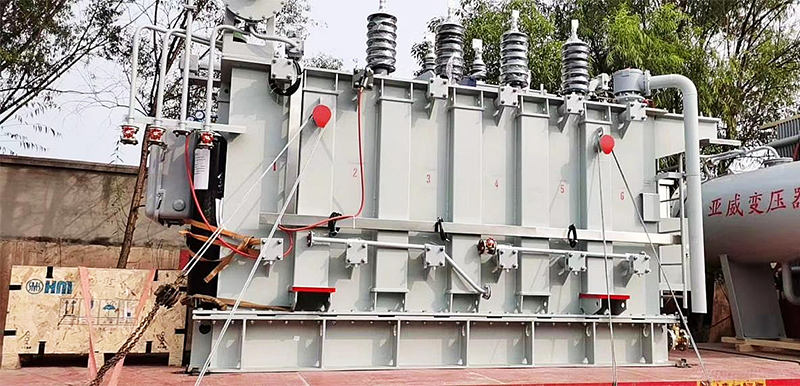- E-mail: admin@yaweitransformer.cn
- Tel: +86-18862719076
Power transformer is the core device of substation and power station, is to ensure the safety and stability of power system operation basis, in the internal structure of power transformer, iron core is the key to achieve smooth magnetic circuit, energy conversion and power safety, relevant technicians need to pay attention to the research of transformer core failure from the aspects of power equipment and electrical safety. In this way, the operation stability of the power transformer can be effectively guaranteed. Therefore, this paper will briefly explain the factors causing the ground fault of the core, and diagnose the ground fault of the transformer core, and put forward the treatment suggestion of the ground fault of the core.
Key words: power transformer; Core ground fault; exclude
Iron core is an important part of the structure of power transformer, transformer flux and energy conversion need the function of iron core support, in the actual work of power transformer, iron core will produce a strong alternating magnetic field due to high voltage and high current, which will lead to a higher potential difference to the ground, and finally produce a discharge between the transformer core and the oil tank. The strong discharge phenomenon will cause the transformer core, winding and shell damage. There are many factors that can cause transformer failure, core grounding is the most common fault, this fault has a great impact on the normal work of the transformer, the relevant technical workers need to find the various problems existing in the core grounding in time, need to apply reasonable strategies to deal with, in order to ensure the stable operation of the transformer.
1, the core ground fault factors
In the process of practical application of the transformer, the vast majority of the transformer core often guides the outside of the tank through the sleeve to ground, if the core due to some factors in a certain location of the multi-point grounding situation, it will produce a circulation, which also occurs in the core multi-point grounding fault. In addition to the above factors, the factors that lead to the earth fault of the core are also manifested in the following four aspects: First, the transformer will inevitably produce small metal particles and burrs in the production process, and the transformer in the maintenance process of its internal may also have some conductive substances, under the action of the magnetic field, the conductor material will form a conductive bridge, the iron core and the tank wall short connection situation; Second, during the installation of the transformer, the rubber powder flies into or splashes into the box so that the resistance of the insulator is greatly reduced, and the accumulation in the fuel tank will form a bridge; Third, when the transformer is actually used, the bearing of the submersible oil pump is worn, and the metal powder generated enters the oil tank, and the oil tank wall and the iron core are short-connected; Fourth, when the technical workers install the transformer, the positioning nail is loosened due to carelessness, which greatly reduces the gap between the core clamp and the system support plate, and ultimately leads to the core failure of the power transformer.
2, transformer core grounding fault diagnosis
First, the transformer is in a state of stopped operation diagnosis. Under normal circumstances, large and medium-sized transformers must have a bit of reliable grounding, the core grounding wire is not connected, take 2500V insulation resistance to test, in order to analyze whether the core is grounded, for the core is not powered on the transformer, the equipment is not powered on the basis of the analysis of the grounding problem is more complex, need to take transformer oil and gas chromatography analysis, Combined with the transformer experiment project to make a comprehensive judgment; Secondly, the fault diagnosis of the transformer core grounding in the running state. If the power transformer core has a grounding problem, then the heat of some parts of the core will be greatly increased in a short time, which will cause the composition of the insulator oil to change. Relevant technical workers need to focus on the oil-gas chromatography analysis of the transformer to determine the grounding fault. At the same time, the iron core will form a circulation between the ground points. When local overheating occurs, the total hydrocarbon gas production rate exceeds the normal value, and if the methane and olefin components are higher or the carbon monoxide composition does not change significantly, it can prove whether there is a bad grounding problem in the core.
